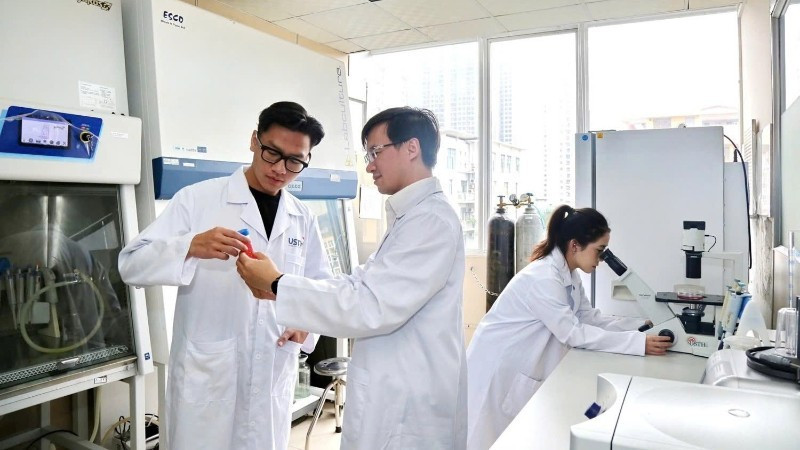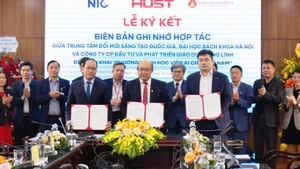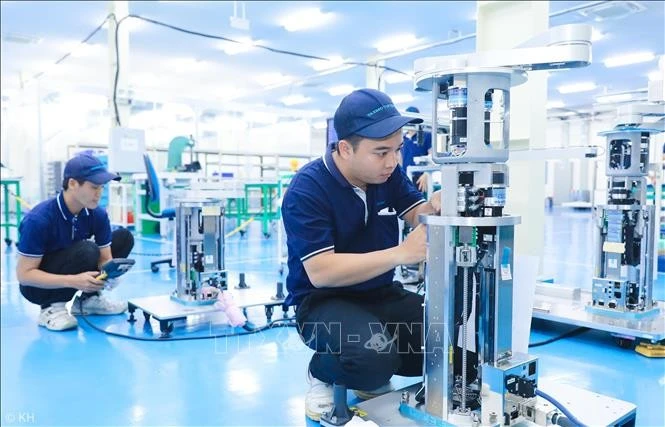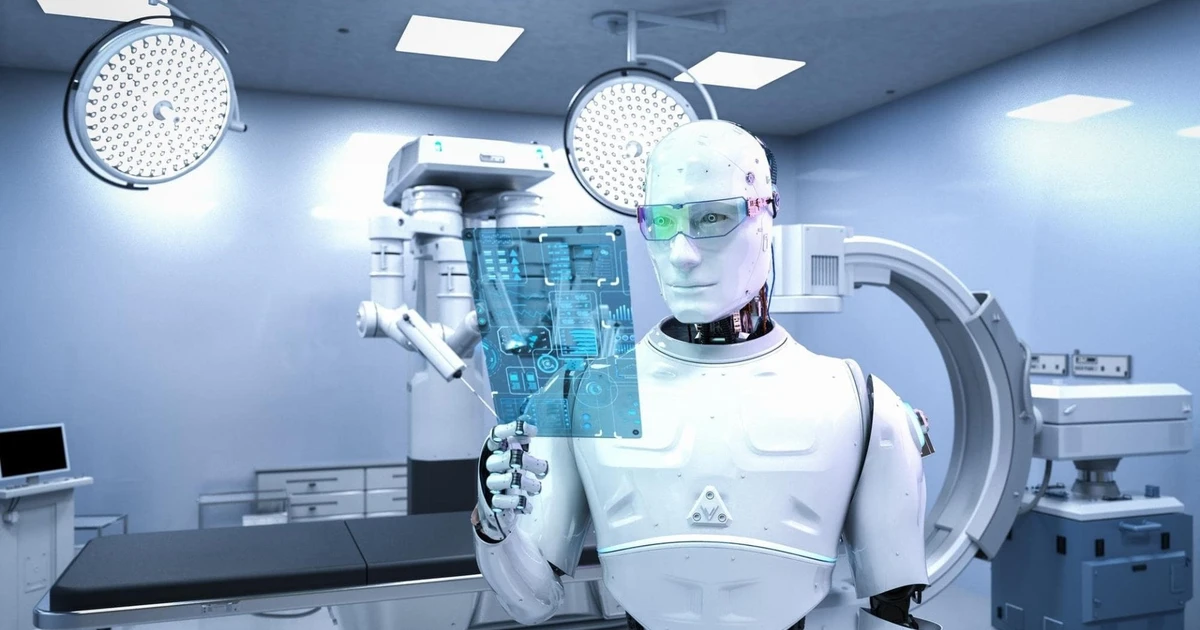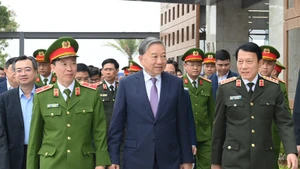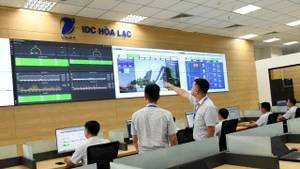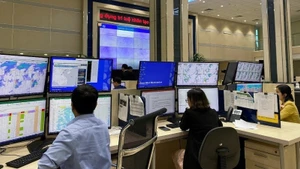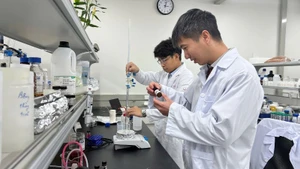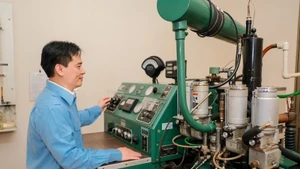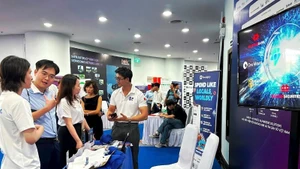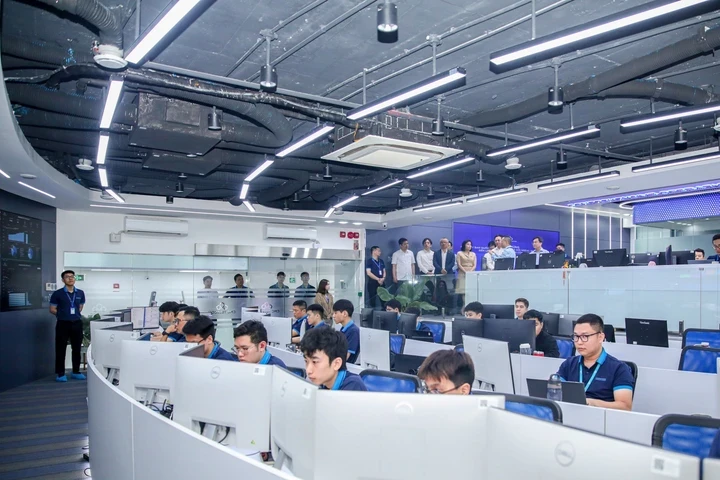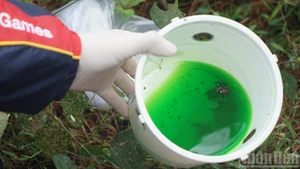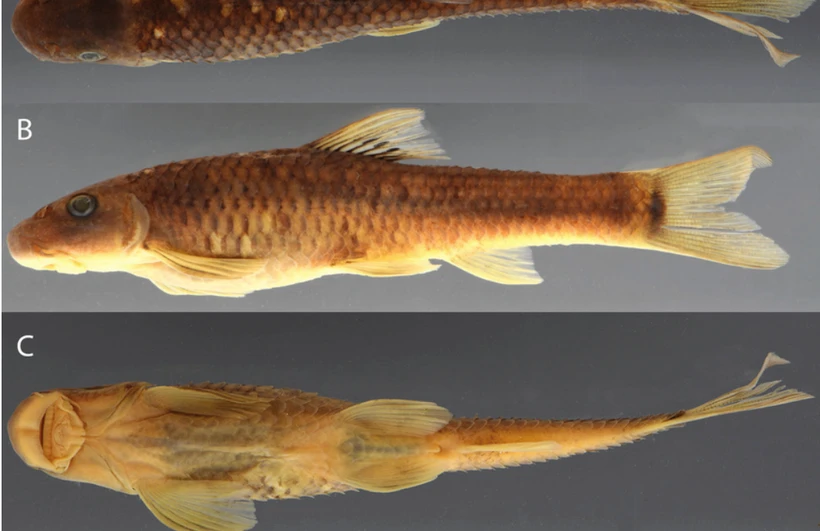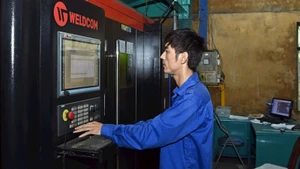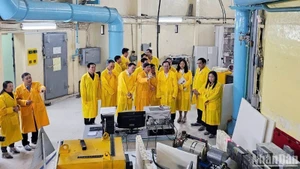Bringing scientific achievements into practice
In recent years, VAST has been granted nearly 300 intellectual property patents, up 52% compared with the previous term. Most research projects have high applicability, particularly in materials science, physics, biotechnology, and environmental science.
One notable example is the Center for DNA Identification (CDI), Institute of Biotechnology — one of three leading units participating in the project to identify the remains of martyrs lacking information, under Decision No. 150/QĐ-TTg of the Prime Minister. With a capacity of 4,000 samples/year and the application of gene sequencing and SNP analysis technology, the centre has raised its success rate to 70%, offering hope to thousands of families. So far, the centre has extracted around 800 samples and handed over more than 1,200 results.
In the fields of physics, Dr. Do Hoang Tung from the Institute of Physics is the “father” of PlasmaMed—a device that accelerates wound healing without antibiotics. After four years of research, Dr. Tung and his team successfully manufactured one of the world’s first plasma generators using sliding arc technology. PlasmaMed is now used in many hospitals and beauty centres.
VAST’s research models have also been directly transferred to farmers. For example, the biofloc technology for tilapia farming helps control water quality, reduces pollution, save resources, and allow crop rotation between shrimp and fish, thereby increasing yields and meeting export standards.
Prof. Dr. Tran Tuan Anh, Deputy Head of VAST, said that in just five years the academy had produced more than 12,000 scientific projects, of which 8,400 were international articles, up 73% compared with the previous period. Six of its journals are now indexed in Web of Science and Scopus, with each PhD candidate publishing on average nearly two ISI-standard papers. These results reflect VAST’s orientation towards linking basic research with practical applications, concentrating resources on fields with direct impact on socio-economic development. This is also a key criterion in project approval, ensuring research resources are focused rather than spread too thinly.
At present, VAST has mastered many core technologies in clean energy, materials, biotechnology, defence, agriculture and fisheries. Many products have been commercialised with revenues worth tens of billions of VND, such as heat-resistant paint and nano curcumin. The academy also focuses on training young human resources through its Academy of Science and Technology and the USTH, providing skilled personnel for institutes, universities and enterprises.
In the coming time, VAST will concentrate on key fields such as advanced materials, artificial intelligence (AI), robotics, nanotechnology and marine pharmaceuticals, aiming to deliver more products for real-world use. Assoc. Prof. Dr. Phan Tien Dung, Head of the Department of Technology Application and Deployment, said that many products already in practical use have been highly appreciated by enterprises and localities.
To help research come to market
Over the past years, besides achievements, VAST acknowledges limitations in technology transfer and commercialisation of research results, which do not match its potential.
Dr. Nguyen Tran Dien, Deputy Head of the Department of Technology Application and Deployment, said that too few technology transfer contracts had been signed—just two out of 36 units had contracts. Businesses often order services rather than co-invest in the research process. In addition to internal challenges, institutional barriers also slow the application of science and technology, while overlapping and inconsistent legislation further hinders progress.
The implementation of the autonomy mechanism under Decree No. 60/2021/ND-CP of the Government has also exposed shortcomings, unsuited to the nature of scientific research, which is “time lag” and “high-risk”. This has left many research institutes and centres struggling to operate effectively and fully tap their innovative potential.
Barriers to technology transfer show that problems not only lie in mechanisms and markets but also in human resource training. Dr. Phan Ke Son, Secretary of the Youth Union at VAST, stressed that it is necessary to build a research-to-market bridge, in which the Government acts as the “conductor”; grant greater autonomy to research units with performance-based management; and improve laws on investment, public assets and intellectual property.
Prof. Dr. Chu Hoang Ha, Deputy Head of VAST, emphasised that the new approach is not only about action plans—it involves creative models that turn research into a driving force for development. VAST is working to build an innovation and start-up centre, encouraging the establishment of spin-off enterprises from research institutes, and implementing the programme “One institute linked with one enterprise” to pilot, commercialise and replicate technologies.
Resolution No. 57 sets the goal that by 2030 Viet Nam will have “12 researchers in science, technology and innovation per 10,000 people” and will build research institutes and universities into strong research entities, closely linking training, research, and application.
Therefore, the academy has determined to raise training quality to international standards and adopt policies to attract and reward talents. Priority will be given to investing in research centres and key laboratories; encouraging enterprises to invest in R&D; and issuing soon special mechanisms to attract domestic and international experts, creating an innovation ecosystem and a favourable working environment for scientists to fully tap their competence.
